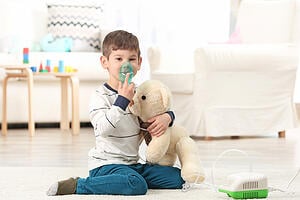It seems as if more and more people are dealing with the uncomfortable effects of allergens every day. When we think of allergies, we tend to think of the outdoors—the pollen, the grass, the weeds. But a lot of what is outdoors ends up indoors. That, along with the effects of allergens from things that are actually in our home, are causing allergic reactions in people that can often be controlled, or at least minimized.
Here we look at ways to minimize the effects of allergens, making our homes a safer, more comfortable place.
We’ll start with ideas to minimize the outdoors allergens that we inadvertently bring in. While it isn’t realistic to say we shouldn’t go outdoors during peak allergen times, when the pollen count is the highest, we can practice ways to keep the allergens outdoors when we come in.
The easiest way to leave pollen outside is by closing windows and doors during peak pollen times, which is generally in the morning hours. In the warmer summer months, use an air conditioner instead of leaving windows open. Air conditioners not only regulate the temperature in your home, but the filter will keep allergens at bay.
Control moisture and mold but using a dehumidifier to remove the excess moisture from the air. Use an exhaust fan when you have your shower on and limit the time you have your shower running. Excess moisture that builds up in the air is a cause of mold spurs. If you do see signs of mold, clean it immediately and continue to keep an eye on that area.
Another good habit to get into is wiping down your shower, tub and sinks after use.
Frequent dusting will also decrease the allergens in our homes. However, your method of dusting is important to consider. If using a dry duster, you are essentially just pushing the allergens around, making them airborne. Using a wet cloth will effectively remove the dust and allergens, reducing allergic reactions.
Wet mop your floors at least once a week to remove pet fur and dander, pollen and other allergens.
If possible, remove rugs from your home. If this is not a feasible idea, vacuuming is key. Be sure to vacuum your rugs multiple times a week… and also vacuum any heavy drapes and cloth furniture that hold dust and allergens.
Use dust-mite proof covering on your mattresses and pillows and wash your bedding as often as once a week in hot water to remove dust-mites.
If you have dogs in the home, keeping them out of your bedrooms will help prevent the spread of pet dander and fur, which is the cause of allergic reactions for some people. Bathing you pets once a week will also cut down on the allergens, as will washing their toys and beds in hot water on a regular basis.
While there are numerous other actions that can be taken to control the spread of allergens, taking small steps now and planning ahead will allow you to decrease the allergic reactions and make your home a healthier and more comfortable environment.

